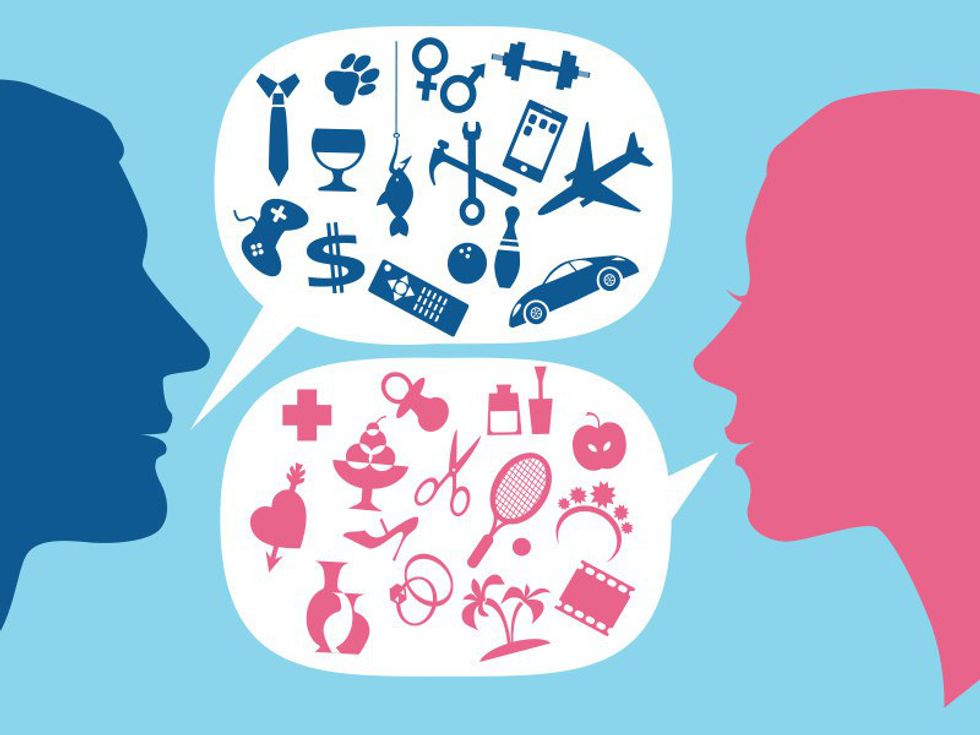Now I’m going to start this article by saying that I’m not trying to take a definitive stand on any side of this, but I would just like to propose these ideas to be thought on and reflected about.
It might seem weird, but this whole article was inspired by a shorter than average shirt. What does that even mean? You may ask. Well, it means that I was wearing a crop top and talking to a friend about how sick I was feeling when I looked down and thought about how strange it would be for a guy to wear a crop top. At first it was amusing, imagining my guy friends wearing short shirts and walking around campus bearing their midriffs in a comedic way. It went from amusing to pensive, however, when I thought about the reason WHY it would be funny; the answer being that it goes against the ideas of gender specific norms.
This got me thinking more about the different binaries that are present regarding gender. What defines masculinity and femininity, how those are expected to coincide with certain sexes, and how what gender identity one is expected to identify with essentially defines their life. Masculinity, according to the top result on google, is “having qualities or appearance traditionally associated with men, especially strength and aggressiveness” while femininity is defined as “having qualities or appearance traditionally associated with women, especially delicacy and prettiness”. So, if I saw a guy wearing a crop top, it would be amusing because it’s unexpected. The reason it’s so unexpected is because crop tops are a piece of clothing associated with females and to see it on a male would go against the idea of what I define as distinctly male.
Which brought me to another question: how did I develop this idea of male versus female? The most obvious answer is society. As I was talking to my friend, I asked him if he would ever consider wearing a more gender specific item of clothing; a dress. He told me that even if it was socially acceptable for guys to wear dresses, he wouldn’t because “it’s a girl thing” and “even if it didn’t matter and no one cares, that wouldn’t be me.” Which prompted me to ask why he didn’t consider it to be him. Was it because a dress wouldn’t be comfortable physically? Would he feel uncomfortable socially? He responded with “those are norms I’ve never really thought about. They just seem normal to me like I don’t think about them often.”
The idea of what normal male and female traits are is something that comes with one’s interactions with society and the ideas that have been instituted of what is expected from both males and females. Therefore, adhering to or going against these societal norms are what determine how one is viewed by society itself, and ultimately shapes the opportunities available and the path in life that they are to take. Since we are born, our role in society is determined by whether a pink hat or a blue hat is placed on our heads, and our ideas of normalcy and uniqueness are shaped in turn.
Children grow up being given gender specific toys, which play a role in solidifying their identities as individuals in both their societal and cultural spheres. Even giving a child a toy that is meant for the opposite gender is adhering to the gender binary because it is an explicit opposition to what is considered normal and what is not. While it is important to give children the opportunity to choose what toys they wish to play with and what constructs they wish to adhere to, there is still the fact that they will be influenced by those around them and be looking for social cues to how they are expected to behave. Their behaviors and ideas will be critically shaped by the cultural background they grow up in and will continue to be shaped with age and experience.
So what’s the point? There isn’t necessarily a point, it’s just something worth considering. As members of society, we are given certain expectations, some more important than others, that influence and impact our standing in our local and global communities. Gender roles can influence behaviors, decisions, and attitudes towards others in ways that can be both harmful and helpful in society. The idea that gender plays a role in where we are bound to go in life is one that you may dismiss at first, but the more the notion is reflected upon and thought about, the more ground it seems to hold and the more importance it has in our modern understanding of society.






















